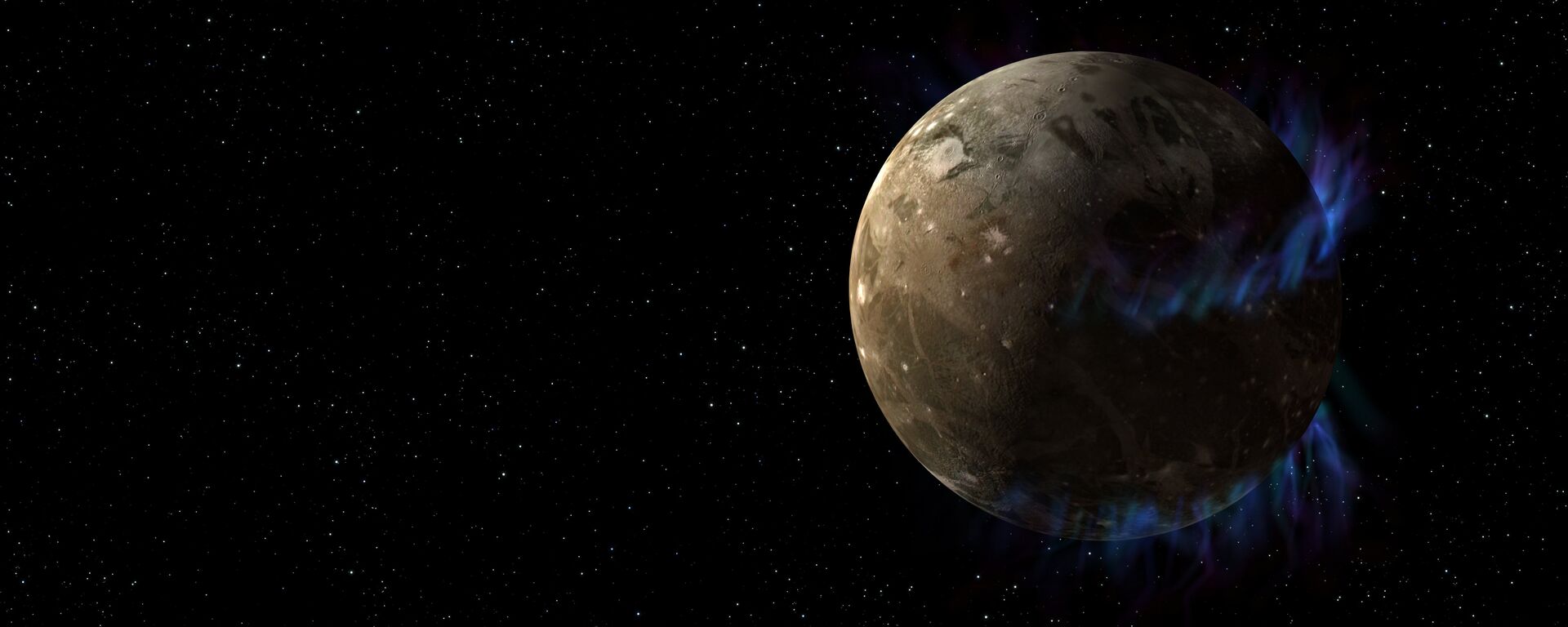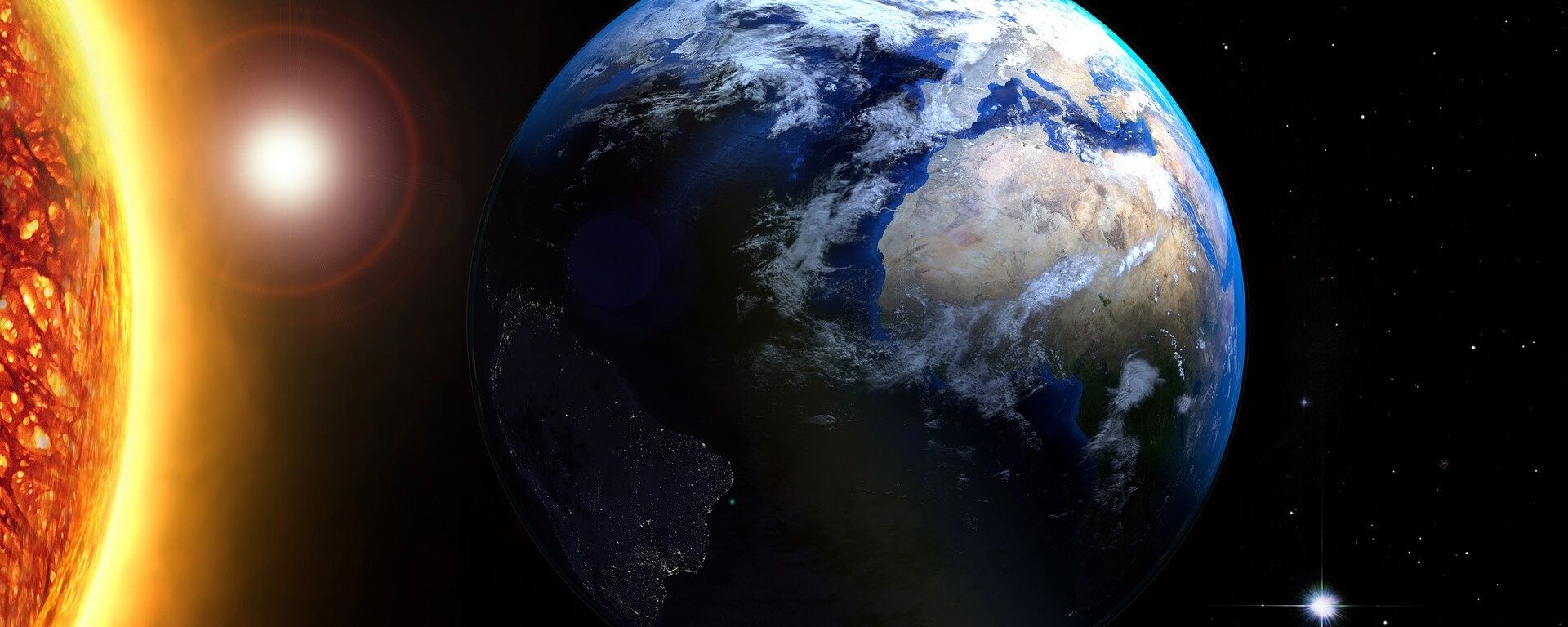https://sputnikglobe.com/20230725/hydrogen-peroxide-found-on-poles-of-jupiters-ganymede-1112124586.html
Hydrogen Peroxide Found on Poles of Jupiter's Ganymede
Hydrogen Peroxide Found on Poles of Jupiter's Ganymede
Sputnik International
The team of space scientists has uncovered intriguing evidence of the presence of hydrogen peroxide on Ganymede, Jupiter's largest moon.
2023-07-25T01:16+0000
2023-07-25T01:16+0000
2023-07-25T01:13+0000
beyond politics
science & tech
jupiter
ganymede
james webb space telescope (jwst)
space
space exploration
https://cdn1.img.sputnikglobe.com/img/07e4/07/19/1079979568_0:25:1633:944_1920x0_80_0_0_51c5e3599b160ecab6844c91dc40ec02.jpg
A team of scientists uncovered intriguing evidence documenting the presence of hydrogen peroxide on Ganymede, Jupiter's largest moon. For years, scientists hypothesized the existence of hydrogen peroxide on Ganymede, but it was only through an analysis of previous data collected by the James Webb Space Telescope (JWST) that it was confirmed. In this latest study, researchers delved deeper into data provided by the telescope to gain a better understanding of Ganymede's surface and the hydrogen peroxide present.The research team focused on analyzing data specifically obtained from the JWST NIRSpec Integral Field Unit. Officials discovered a notable 3.5-micrometer absorption band that indicates the presence of hydrogen peroxide in the northern regions of Ganymede, predominantly on the side facing its directional orbit.Additionally, researchers observed oxygen primarily concentrated in lower latitudes and on the opposite side of the moon. The findings presented a stark contrast to Europa, where most of the hydrogen peroxide is located near its equator.Despite being the largest moon in the solar system, Ganymede has often been overshadowed by Europa, another of Jupiter's moons that garnered more attention due to its potential for hosting life. Nevertheless, prior research has highlighted the potential impact of Jupiter's magnetic field on Ganymede, suggesting a strong likelihood of hydrogen peroxide on its surface.This hypothesis is based on the influence of Jupiter's magnetic field on the irradiation of water ice, resulting in the formation of various compounds, including hydrogen peroxide, oxygen and ozone.The team highlights that their discoveries contribute to a broader effort aimed at comprehending how Ganymede's magnetic field influences its surface chemistry. The identification and distribution of hydrogen peroxide on Ganymede provide valuable insights into the moon's composition and the intricate interplay between its magnetic field and surface processes.The study was published in the journal Science Advances.
https://sputnikglobe.com/20210728/scientists-detect-water-vapour-on-jupiters-largest-moon-ganymede-for-first-time-1083476002.html
https://sputnikglobe.com/20230614/salty-space-rock-offers-clues-as-to-how-planet-earth-got-its-water-1111150770.html
jupiter
ganymede
Sputnik International
feedback@sputniknews.com
+74956456601
MIA „Rossiya Segodnya“
2023
News
en_EN
Sputnik International
feedback@sputniknews.com
+74956456601
MIA „Rossiya Segodnya“
Sputnik International
feedback@sputniknews.com
+74956456601
MIA „Rossiya Segodnya“
jupiter ganymede atmosphere, what is found on jupiter ganymede, is there hydrogen peroxide in space, what are jupiter moon, jupiter satellites, ganymede poles, study of jupiter ganymede, what is jupiter largest moon, which jupiter moon is the largest, ganymede composition, jupiter moons composition
jupiter ganymede atmosphere, what is found on jupiter ganymede, is there hydrogen peroxide in space, what are jupiter moon, jupiter satellites, ganymede poles, study of jupiter ganymede, what is jupiter largest moon, which jupiter moon is the largest, ganymede composition, jupiter moons composition
Hydrogen Peroxide Found on Poles of Jupiter's Ganymede
While Ganymede has received less attention compared to Europa in terms of its potential for alien life, previous studies have indicated the impact of Jupiter's magnetic field on Ganymede's surface and its likelihood of containing hydrogen peroxide.
A team of scientists uncovered intriguing evidence documenting the presence of hydrogen peroxide on Ganymede, Jupiter's largest moon.
For years, scientists hypothesized the existence of hydrogen peroxide on Ganymede, but it was only through an analysis of previous data collected by the James Webb Space Telescope (JWST) that it was confirmed. In this latest study, researchers delved deeper into data provided by the telescope to gain a better understanding of Ganymede's surface and the hydrogen peroxide present.
The research team focused on analyzing data specifically obtained from the JWST NIRSpec Integral Field Unit. Officials discovered a notable 3.5-micrometer absorption band that indicates the presence of hydrogen peroxide in the northern regions of Ganymede, predominantly on the side facing its directional orbit.
Additionally, researchers observed oxygen primarily concentrated in lower latitudes and on the opposite side of the moon. The findings presented a stark contrast to Europa, where most of the hydrogen peroxide is located near its equator.
Despite being the largest moon in the solar system, Ganymede has often been overshadowed by Europa, another of Jupiter's moons that garnered more attention due to its potential for hosting life. Nevertheless, prior research has highlighted the potential impact of Jupiter's magnetic field on Ganymede, suggesting a strong likelihood of hydrogen peroxide on its surface.
This hypothesis is based on the influence of Jupiter's magnetic field on the irradiation of water ice, resulting in the formation of various compounds, including hydrogen peroxide, oxygen and ozone.
The team highlights that their discoveries contribute to a broader effort aimed at comprehending how Ganymede's magnetic field influences its surface chemistry. The identification and distribution of hydrogen peroxide on Ganymede provide valuable insights into the moon's composition and the intricate interplay between its magnetic field and surface processes.
The study was published in the journal
Science Advances.




